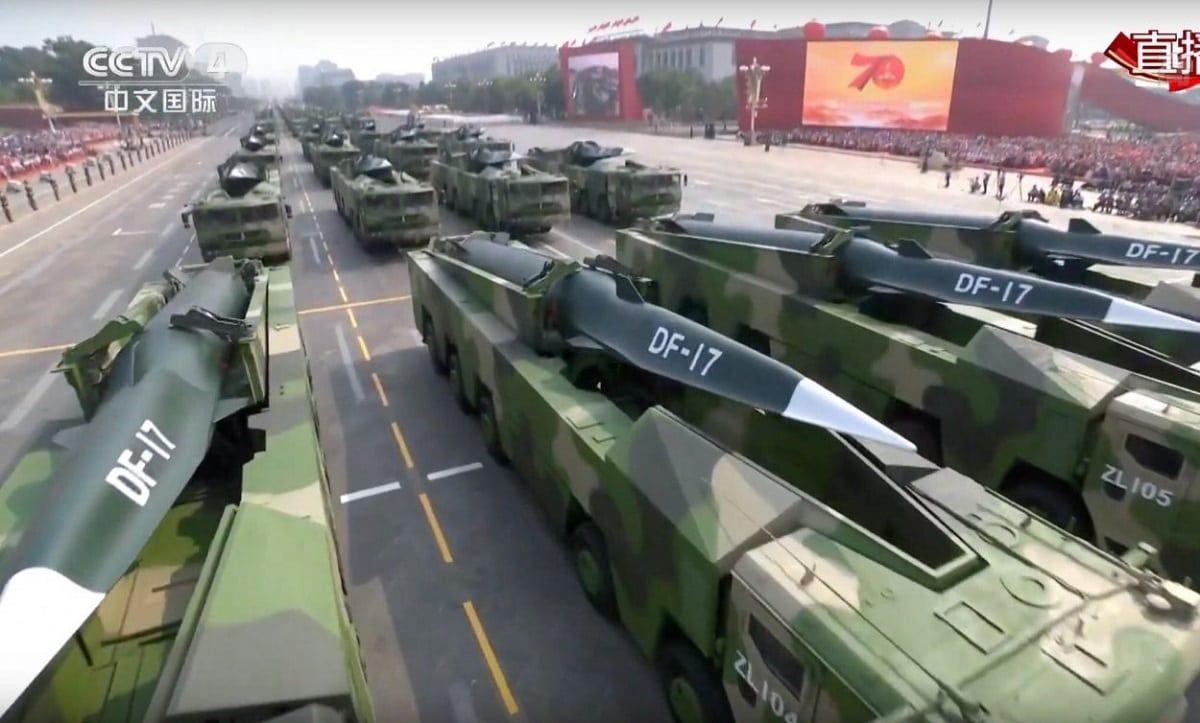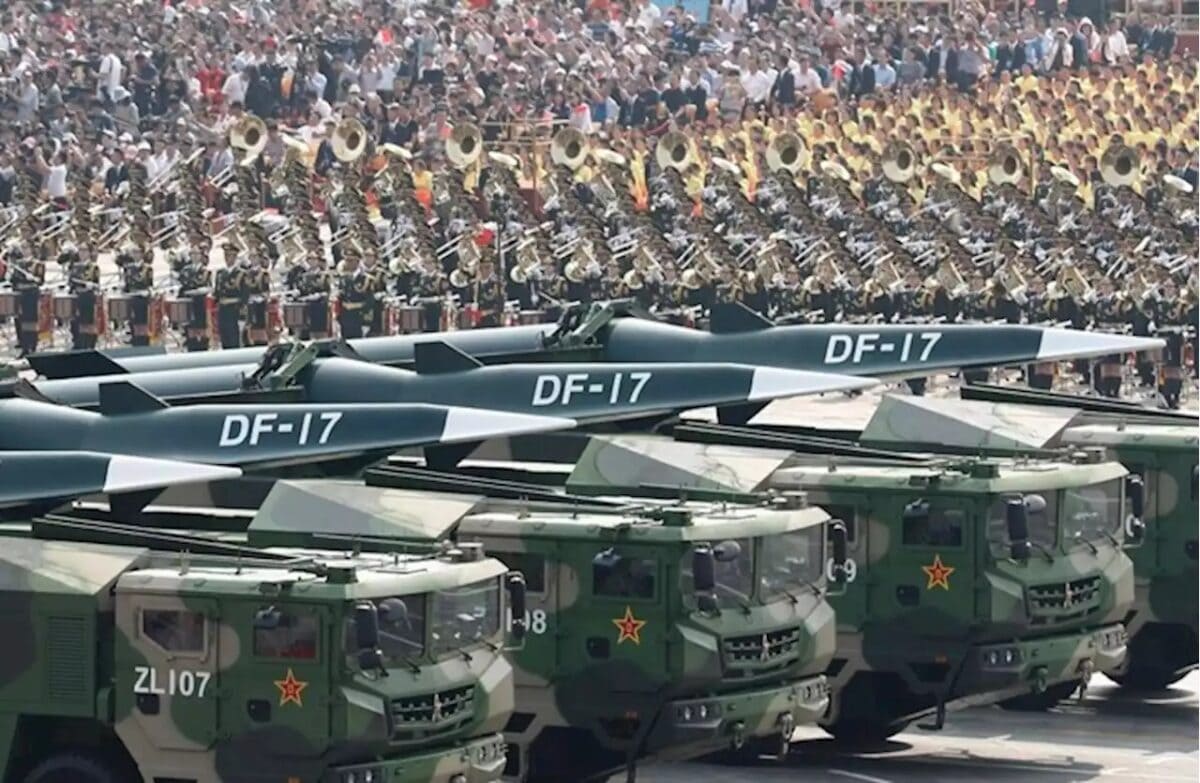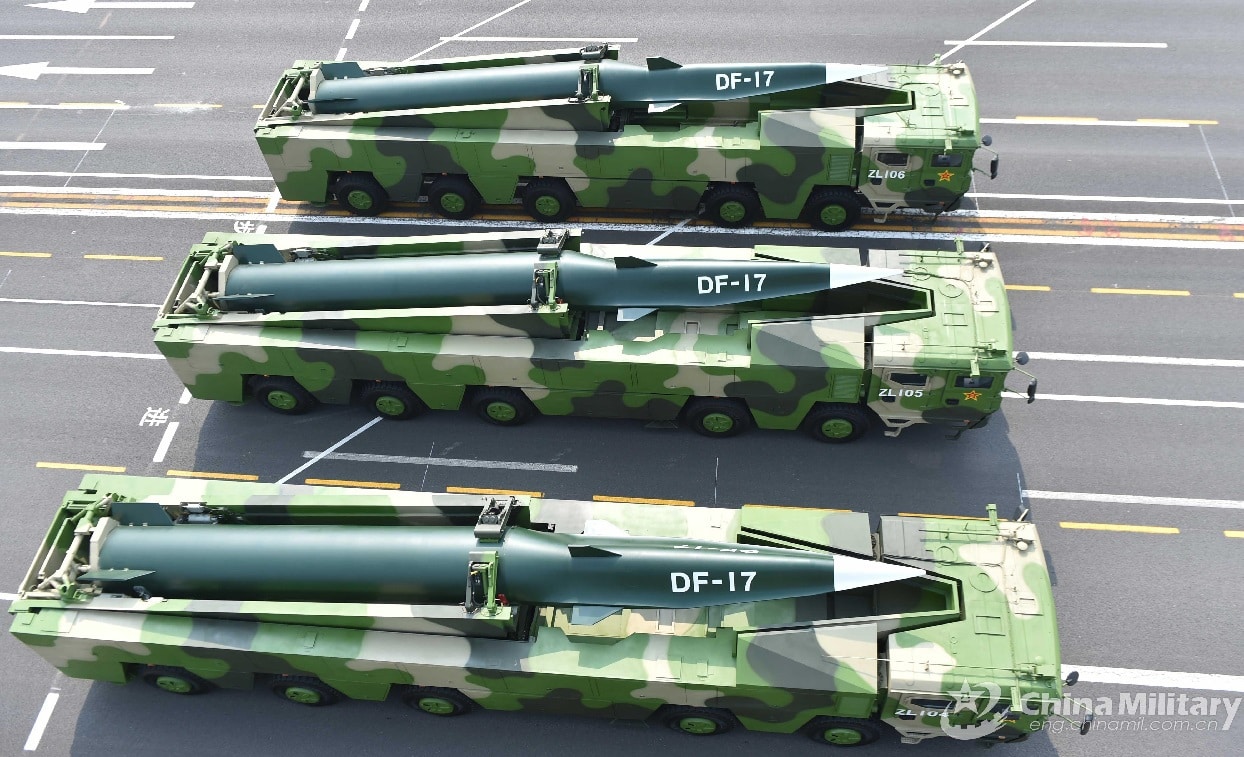Fearing that too many of its vaunted new missiles won’t work, China must vastly increase the number of test launches before putting new weapons into mass production.
Insufficient testing has caused “problems of poor equipment delivery and unstable quality,” according to Chinese scientists writing in the Chinese defense journal Aero Weaponry (English translation here).
The study comes amid U.S. fears that China is ahead of America in hypersonic missile technology, including the recent launch of a Chinese hypersonic glider that partially orbited the Earth like a satellite before reentering the atmosphere.
Yet the Chinese study presents a gloomier picture of Beijing’s missile prowess. There should be at least 15 successful test launches before deciding whether to manufacture a missile, the study recommended. Weapons should only be produced “in small batches” after the design is finalized and as quality control problems are solved, before entering into mass production.
To achieve the desired success rate of 91 percent, “at least 15 missiles are needed when failure is not allowed; when one failure is allowed, 27 missiles need to be consumed.”
Previously, new Chinese air-to-air missiles “had to take eight tests where they hit a moving target to prove their worth, a requirement that has now risen to 15,” said the Hong Kong-based South China Morning Post. “When other tests – for example, checking its resilience against electromagnetic pulse attacks – are factored in, the new missile will have to undertake around 20 tests.”
A rise in Chinese missile tests already worries U.S. officials: as of September, China launched 250 ballistic missiles, according to the State Department. China is also building at least 250 new ICBM silos, a massive expansion of its current 20 silos.
But just as U.S. defense contractors would, China’s defense industry chafed at the stricter test requirements. “The military’s proposals prompted protests from defense contractors, who argued the new missiles’ chances of passing these tests would be less than 20 percent,” the South China Morning Post said. “After negotiations, the People’s Liberation Army and state-owned defense companies reached a compromise…in which the contractor produces 50 missiles, from which the military randomly picks 15 for testing.”
Once a somewhat low-tech force that relied on quantity more than quality during the Cold War, China’s armed forces have advanced remarkably in military technology, including stealth fighters, anti-ship ballistic missiles and a growing fleet of aircraft carriers. In fields such as hypersonic weapons and artificial intelligence, some U.S. experts believe that China has pulled ahead.
However, such rapid military advances never happen without cost. The South China Morning Post pointed to another study published in the Chinese journal Modern Defense Technology, in which scientists warned that so many new weapons were being developed that adequate testing had become difficult. For example, testing weapons in different environments, such as deserts or islands, had been sacrificed.
“The PLA therefore established a new, centralized task force to oversee the reliability of new missiles, built a number of testing facilities with controlled environments to speed up tests and plans to use artificial intelligence technology,” the newspaper said.
Inadequate weapons testing is hardly unique to China. The controversial U.S. F-35 stealth fighter, for example, was put into production while the aircraft was still being developed. There are also plenty of missiles with spotty records: U.S. ballistic missile interceptors have failed numerous tests, while the 1960s AIM-7 Sparrow air-to-air missile performed far more poorly in Vietnam than predicted.

Image: Chinese State TV Screenshot.

Image Credit: Chinese State TV.
But the Chinese study is a reminder that while authoritarian regimes like China and Russia extol the virtues of their wonder weapons – and are much better than democracies at concealing their failures – they have their problems, too.
Michael Peck is a defense journalist. He can be found on Twitter and Linkedin.

